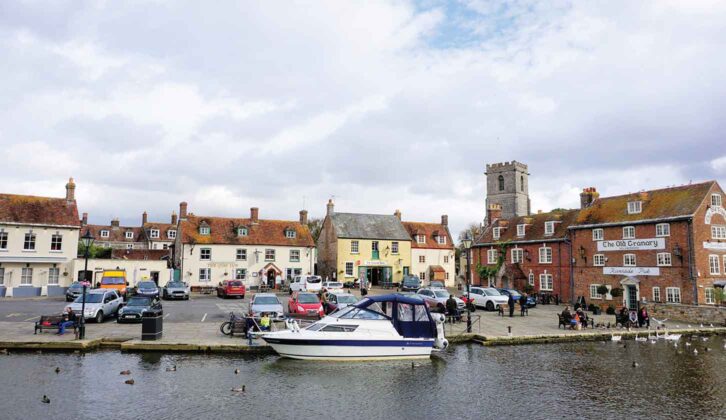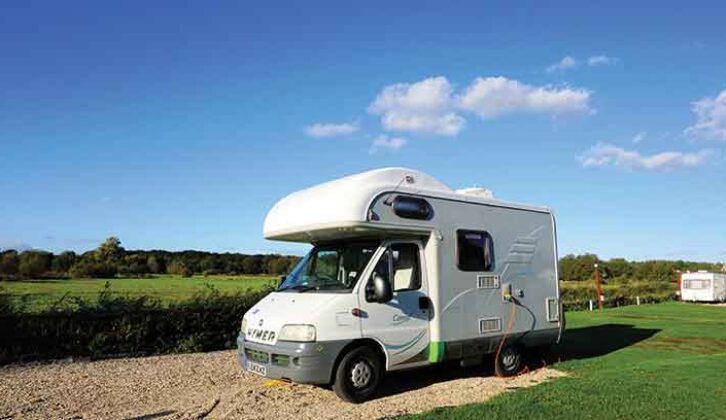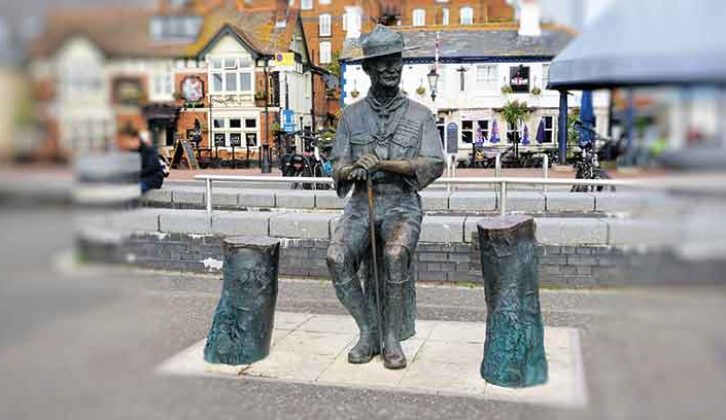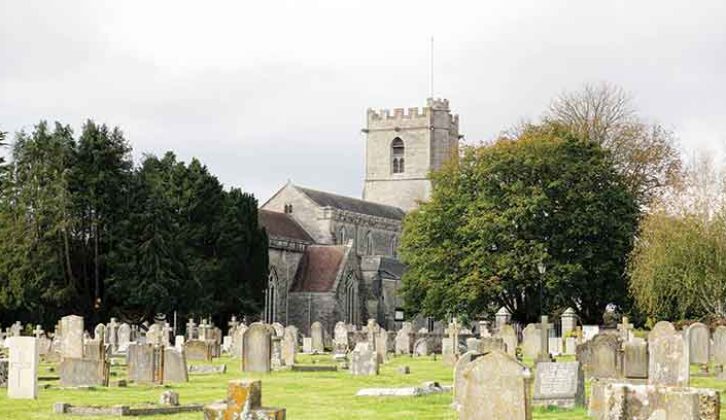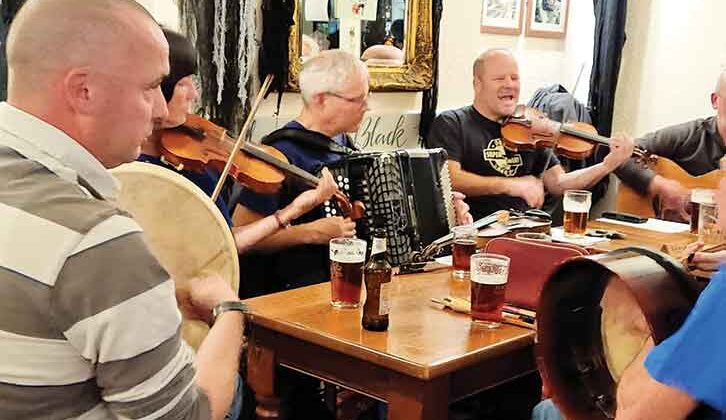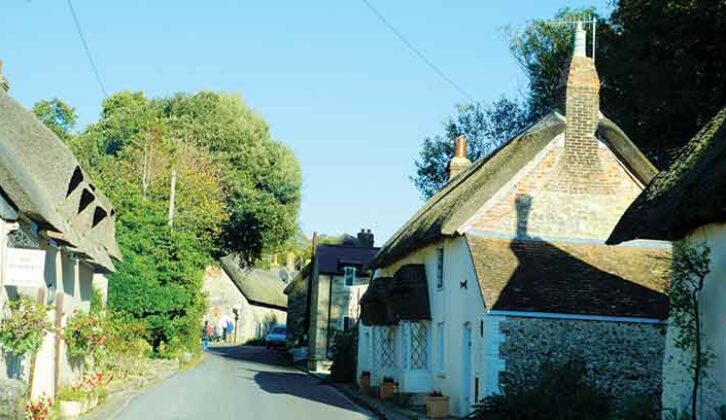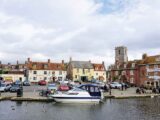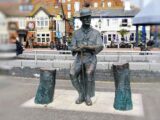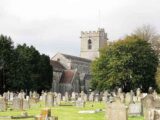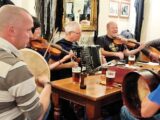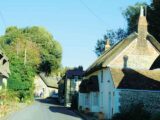Follow a straight line (well in our case, given the vagaries of the land, it was more of a wobbly line, veering slightly north to avoid the rain) between the well-known destinations of Weymouth and Poole and you travel for about an hour through the gorgeous county of Dorset.
What is perhaps not immediately noticeable is that as well as fine scenery, you will also be surrounded by great history, from TE Lawrence (aka Lawrence of Arabia) to Robert Baden-Powell (of Scouting fame), from the Tolpuddle Martyrs (school history lessons, anyone?) to Vice-Admiral Sir Thomas Hardy (who served with Nelson at the Battle of Trafalgar).
Oh, and don’t forget the ghost village taken over then abandoned by the army during World War II. Add a naked giant on a hillside, a couple of small breweries, plenty of walks, and one of the best-known limestone rock formations in the country, and I think you will agree that you are travelling through a rather special part of the world.
There is a good chance that somewhere around the midway point along this journey, you will pass close to the small and seemingly innocuous village of Wool. I mention this because it was here that we decided to base ourselves for a long weekend break towards the end of last summer, at Whitemead Caravan Park, although you can check out our best motorhome site in Dorset guide for more touring destinations.
Comfortable campsite
This proved to be a comfortable, friendly motorhome site which backs onto countryside and has two pubs and a train station less than a stone’s throw away. Added to this, Monkey World and The Tank Museum are just over half an hour’s walk from Whitemead.
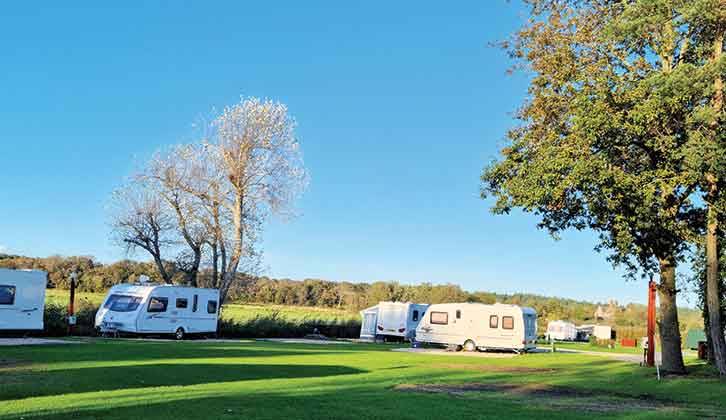
At first glance, despite its handy location, the village of Wool itself isn’t much to look at – but it is one of the friendliest villages we have stayed in, with those welcoming pubs less than a five-minute walk, and a third just a 20-minute stroll, away.
Our biggest challenge was deciding what to visit in the area and what to leave out. Oh, and what to wear, because the weather was typically English – sunny one minute, grey skies the next, with a stiff breeze thrown in for good measure.
Having set up comfortably on our pitch, we enjoyed a casserole (home-cooked and ready to heat up, to save any faffing around after our journey to the site). Then we had to make
the decision about where to visit first.
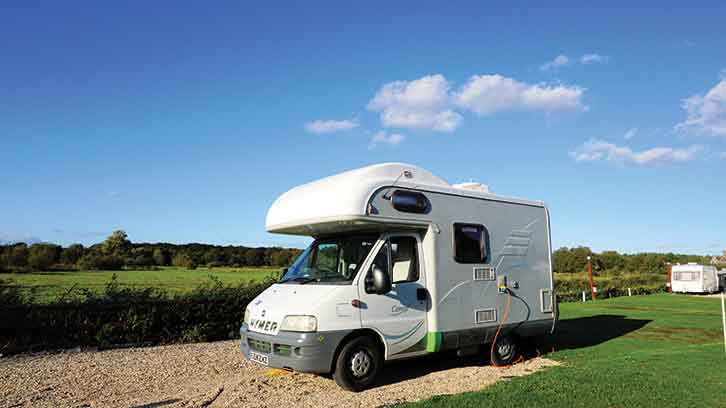
We settled on the coastal town of Poole, at the end of our wobbly line and a 40-minute train journey from Wool. Yes, it would have been quicker to drive, but with the railway station so close, we chose to leave our ’van parked up and let someone else do the driving.
Harbouring great beauty
Poole is blessed with the largest natural harbour in Europe, which also doubles as an important nature conservation area, Site of Special Scientific Interest and Marine Conservation Area. If that isn’t enough wildlife for you, it also has a wetland teeming with birdlife. Alongside all this nature are plenty of watersports for those inclined to more active pursuits, including wakeboarding, water-skiing and an impressive marina.
You can hire boats there, but guided cruises are also available to take you to several destinations, including the National Trust nature conservation area of Brownsea Island, or Old Harry Rocks, just off the coast of Studland. And if you prefer to let someone else do the work for a while, why not? This is a holiday, after all.
If you would rather keep your feet on dry land, there is always crabbing to be done off the Quay, or a pleasant restaurant, café or pub where you can while away an hour or two while enjoying the views out to sea and the islands. Needless to say, this is a pastime in which we indulged – the train was taking us back, so there would be no driving today.
We were spoilt for choice, and in the end, opted for lunch at The King Charles, which is reputedly one of the oldest inns in town.
Scouting the area
Suitably refreshed, we continued our stroll along the waterfront, where we came across a life-sized statue of Robert Baden-Powell (to be fair, it would have been very hard to miss it!) and learnt that he set up his first Scout camp for teenage boys on the aforementioned Brownsea Island in 1907.
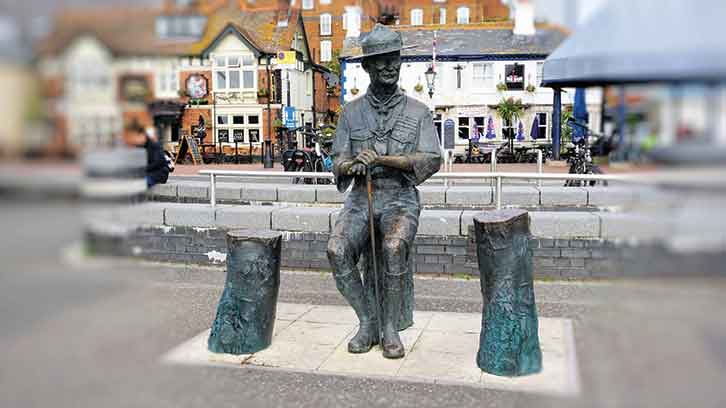
This camp, intended as a trial run in applying Baden-Powell’s military experience to more leisurely pursuits, is widely regarded as the start of the worldwide Scouting movement.
Away from the water, Poole old town is well worth a visit, especially if, like me, you enjoy a spot of window (and real) shopping in interesting shops, mixed with some local history. Poole Museum is free to enter and its exhibits range from pirates to the pottery for which Poole is famous, as well as archaeology and art.
The museum also hosts the Tourist Information Centre, where you can pick up the Cockle Trail leaflet – follow the brass ‘cockles’ embedded in pavements around the town as you learn about its history. A fun way to see a bit more of Poole than we might otherwise have done.
Back at the ’van, we freshened up and walked for all of three minutes to the Black Bear, where I enjoyed a steak & ale pie and Ro tucked into a spicy burger. Just as we were finishing our meal, we were pleasantly surprised by the arrival of a group of musicians – it was Irish night, and lots of laughter and bad singing (us, not the paid entertainment!) ensued. A great, unexpected, way to end our evening out in Wool.
Lawrence of… Wareham?
Next morning dawned with the skies still heavy and grey, but – with the sun promising to try its best for us – we were soon back on the train, headed in the same direction as yesterday but just 15 minutes along the line this time.
We alighted in the pretty market town of Wareham, lying between the Rivers Frome and Piddle and the sea. The free museum here has an interesting display on TE Lawrence, who was stationed at nearby Bovington Camp after enlisting in the Tank Corps. He later switched to the RAF before travelling overseas, and lived nearby, at Clouds Hill, for a time before his death in a motorcycle accident in 1935.
Lawrence spent much of his time in Wareham and there is an effigy of the great man in full Arab dress in St Martin’s Church. Sited on the town walls and dating back to the 11th century, this small church is a scheduled ancient monument and well worth a visit in its own right.
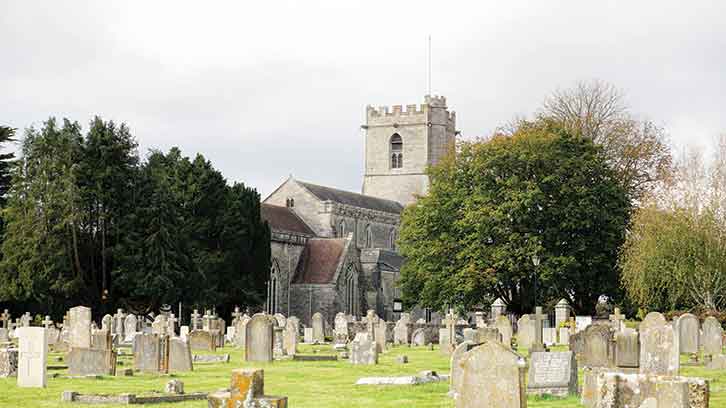
Those town walls are also worth a look. They were built by King Alfred to defend what was then a strategically very important settlement from the Vikings, and are now a scheduled ancient monument. Don’t expect stone walls, mind you – today, they are more like grassy mounds. After following the trail around the walls and admiring the views from the top (pick up a leaflet from the Tourist Information Centre), we stopped to enjoy Dorset crab sandwiches on the Quay.
Strolling along by the river
Afterwards, I squeezed in a short wander around the shops, then we both enjoyed a lovely stroll through a meadow and beside the river before catching the train back to Wool.
This was one of several pleasant walks around Wareham, including both riverside and woodland terrain, all of which looked pretty relaxing and accessible. Happily, the threatened showers held off all day, so the waterproofs we carried – yours truly having heeded Baden-Powell’s instruction to ‘be prepared’ – weren’t needed after all.
That evening, it was the turn of the other very convenient pub, The Ship Inn, to provide dinner. Sadly, it was a little too nippy to enjoy their beer garden, but the nautically themed interior suited us well – as did the lamb chops and scampi!
On our final day, we were still trying to decide which places to visit and what we would have to leave for another time.
We debated taking the train in the opposite direction, heading for Weymouth or Swanage, or perhaps going north towards Dorchester and Cerne Abbas, with its famous hillside chalk giant – but the pull of one of our new favourite places was simply too great to resist.
So in the end, we stowed away our breakfast gear and drove the very short distance to Durdle Door and Lulworth Cove. We only discovered this delight the previous year, but we couldn’t resist a sneaky return visit while we were so close by.
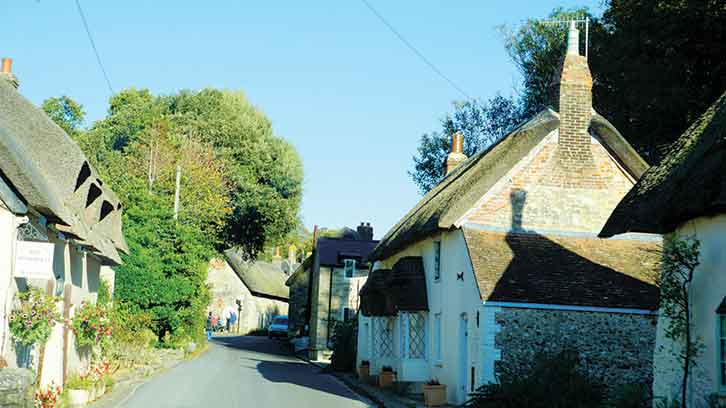
Discovering the lost village
We rounded off our trip with a visit to Tyneham, Dorset’s ‘lost village’. Although a few cottages and other buildings remain – including the local telephone box, looking as it would have done in 1943, and the village school complete with lesson plans and books on desks – the place is deserted and felt melancholy, frozen in time as it is.
Now part of Lulworth firing ranges (check the roads are open before visiting, because they close on firing days), Tyneham was an ordinary village until 1943. It was taken over by the military to be used for target practice, with a promise that the villagers could eventually return.
But by 1948, it was clear the villagers would not be allowed to go back and that it would remain in the hands of the armed forces, to be used as a training ground – as it still is today.
And so to one last meal, in one last local. This one was a bit of a walk, at around 20 minutes away, but we couldn’t miss out the Seven Stars. Then it was a final pint in the Black Bear – alas, no musical entertainment this evening, although we enjoyed an entertaining chat with the locals – completing another very pleasant and relaxing evening out in Wool.
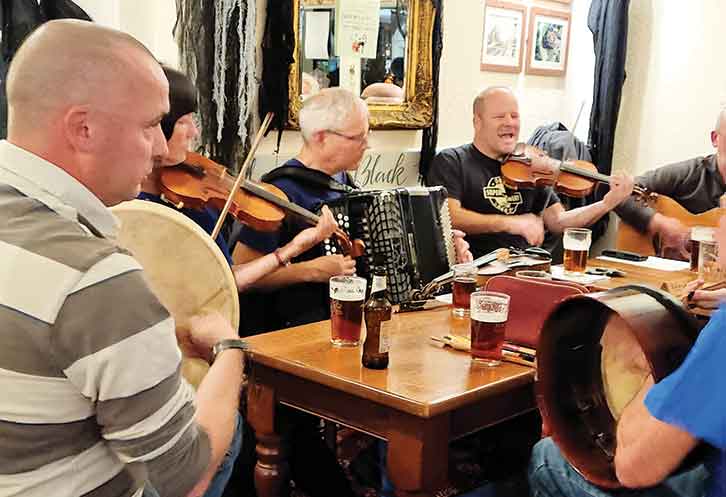
Now it was time to head for home, with a long list of places that we still want to visit in the area, including historic Cerne Abbas, and the home of TE Lawrence for starters, along with a promise to return to our new friends on site and in the pub.
We had followed that wobbly line across Dorset broadly eastwards this time, so perhaps next time we should follow it west, to explore Weymouth and the West Dorset Heritage Coast.
If you’re looking for more touring destination inspiration, check out our guide to the best motorhome sites in Devon, a neighbouring county with plenty of beauty to explore.
Touring essentials
Way to go
From our home in Buckinghamshire, it was a 2.5-hour drive taking the M4 and M3 to Hampshire, then the A31 and A350 into Dorset.
Where we stayed
Whitemead Caravan Park
East Burton Road, Wool, Dorset BH20 6HG, whitemeadcaravanpark.co.uk
As well as around 100 pitches (grass and hardstanding), the site has a games room with a pool table, table football and dart board. There’s also a small onsite shop, and a play area for the children.
Public transport during our tour to Dorset
Apart from the railway station, there are also regular buses to Weymouth, Swanage and Poole.
Find out more
- Poole Tourism: this is a good place to start when you’re looking for information about visiting Poole and the local area.
- Wool
- Wareham
If you’ve enjoyed reading this article, why not get the latest news, reviews and features delivered direct to your door or inbox every month. Take advantage of our brilliant Practical Motorhome magazine SUBSCRIBERS’ OFFER and SIGN UP TO OUR NEWSLETTER for regular weekly updates on all things motorhome related.
